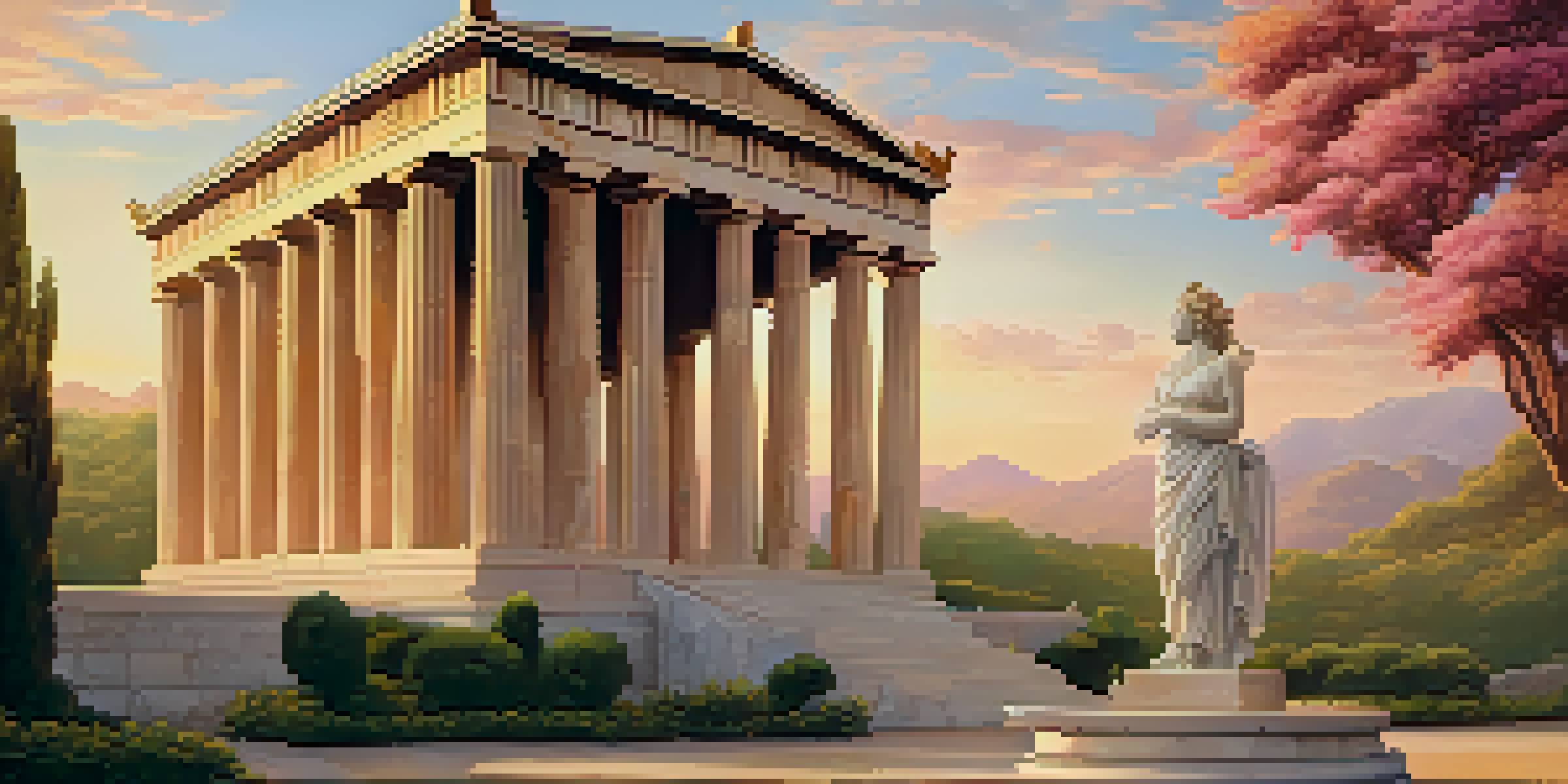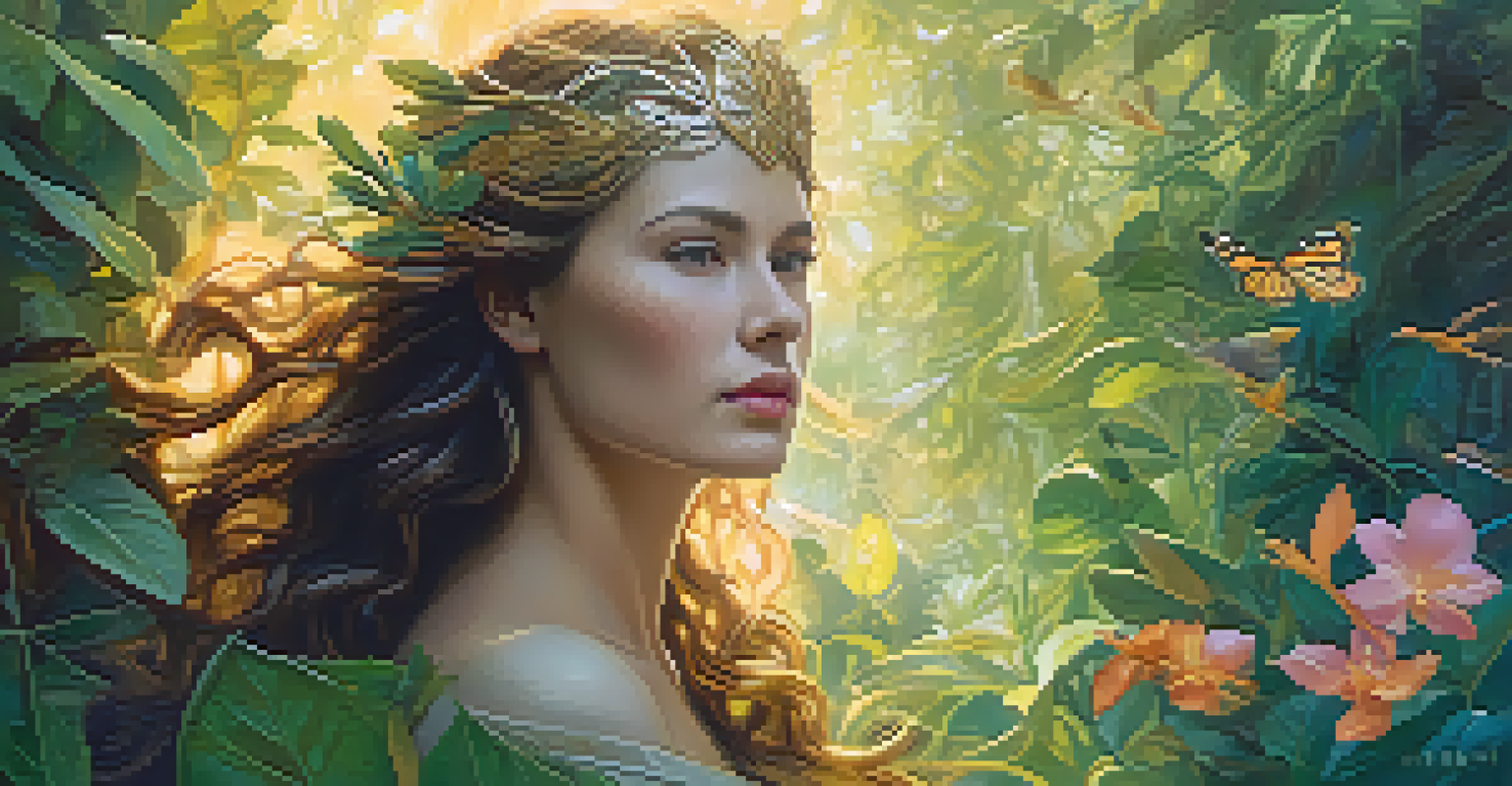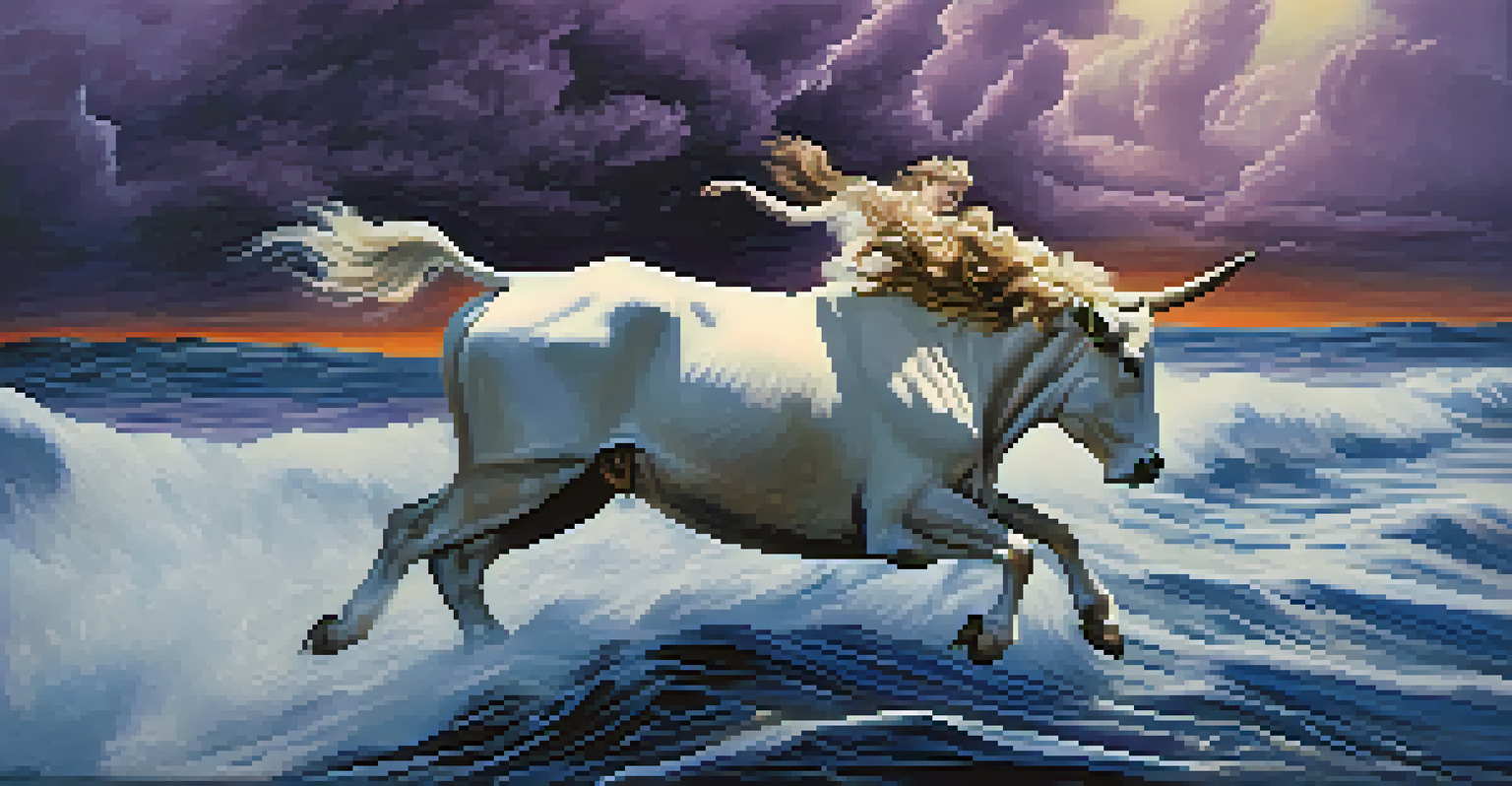The Interconnection of Mythology and Literature in Art

Understanding Mythology's Role in Literature and Art
Mythology serves as a rich source of inspiration across various forms of literature and art. It weaves together stories that capture human experiences, emotions, and moral dilemmas, making them relatable to audiences over generations. For example, the tales of Greek gods and heroes have not only influenced classic literature but have also inspired countless paintings and sculptures throughout history.
Mythology is not a lie; it is a metaphor, a way of expressing the inexpressible.
In literature, mythological references often enhance narratives, providing depth and context. Think of how many modern authors incorporate mythological themes, such as the hero's journey, a concept rooted in ancient stories. This intertextuality allows readers to connect with the material on a deeper level, as they recognize familiar motifs and archetypes.
Art, too, reflects these mythological themes, often depicting scenes and characters drawn from ancient stories. Artists like Botticelli and Michelangelo created masterpieces that immortalize these tales, showcasing their beauty and complexity. The interplay between mythology and art not only preserves these stories but also invites viewers to explore their meanings anew.
Literature: A Canvas for Mythological Exploration
Literature acts as a canvas where mythological themes are painted in vibrant colors. Writers can reinterpret ancient myths, creating modern narratives that resonate with today’s audiences. For instance, in 'Circe' by Madeline Miller, the author reimagines the story of the sorceress from Homer's 'Odyssey,' inviting readers to empathize with her struggles and desires.

This literary reworking not only breathes new life into old tales but also invites discussions about gender roles and power dynamics. By placing mythological figures in contemporary settings, authors challenge traditional interpretations and provoke thought about their relevance in modern society. These stories become a mirror reflecting our current values and dilemmas.
Mythology Inspires Literature and Art
Mythological themes enrich literature and art by providing relatable narratives that resonate with audiences across generations.
Additionally, the use of symbolism in literature often draws from mythology, enriching the narrative. A simple object, like an apple, can symbolize temptation and knowledge, echoing the tale of Adam and Eve. This layering of meaning keeps readers engaged and encourages them to uncover deeper insights behind the words.
Art as a Visual Interpretation of Mythological Narratives
Art captures the essence of mythology in ways that words often cannot. Through visual storytelling, artists convey emotions and themes that resonate on a visceral level. For example, the works of artists like Gustav Klimt use mythological subjects to explore love, desire, and beauty, inviting viewers to interpret these concepts through a personal lens.
The stories we tell about ourselves are the stories that shape who we are.
The choice of colors, forms, and compositions in art can evoke specific feelings tied to the myths being depicted. In a painting of the 'Rape of Europa,' the artist's use of movement and light can create a sense of tension and drama, drawing the viewer into the narrative. This immersive experience reinforces the power of myth as a storytelling tool.
Moreover, art exhibitions often juxtapose different interpretations of the same myth, allowing audiences to see how various cultures and eras have understood these stories. This diversity enriches our appreciation and understanding of mythology, highlighting its universal themes and the unique perspectives each artist brings to the table.
The Influence of Cultural Context on Mythological Themes
Cultural context plays a crucial role in shaping how mythology is interpreted in literature and art. Different societies may emphasize various aspects of the same myth, leading to unique portrayals and meanings. For example, the tale of King Arthur can be found in numerous adaptations, each reflecting the values and concerns of its time.
In literature, this can manifest as a shift in focus from the heroic deeds of knights to the internal struggles of characters. In modern adaptations, we often see a more nuanced portrayal of figures like Guinevere or Lancelot, exploring themes of love, betrayal, and identity. This evolution showcases the adaptability of myths as they resonate with changing societal norms.
Cultural Context Shapes Myths
Different cultural contexts lead to unique interpretations of myths, reflecting contemporary values and societal norms.
Art also reflects these cultural shifts, with artists infusing their works with contemporary issues. For instance, feminist artists may reinterpret classical myths to critique patriarchal narratives. This practice not only honors the original stories but also reclaims them, allowing new voices to emerge within the mythological canon.
Intertextuality: The Connection Between Mythology and Literature
Intertextuality refers to the relationship between texts and how they influence one another. In the realm of literature, this concept is especially relevant when discussing the use of mythology. Writers often draw upon existing myths, weaving them into their narratives to create layers of meaning that enrich the reading experience.
For example, in 'The Song of Achilles,' Madeline Miller intertwines elements of Greek mythology with personal stories, creating a tapestry that resonates emotionally. Readers familiar with the original myths will appreciate the nuances and connections, while newcomers can still engage with the tale's universal themes of love and loss.
This intertextuality extends to art as well, where artists may reference literary works inspired by mythology. The dialogue between these forms fosters a richer understanding of both the myths and the interpretations they inspire, allowing audiences to appreciate the depth and complexity of each medium.
The Role of Mythology in Shaping Cultural Identity
Mythology plays a significant role in shaping cultural identity, influencing literature and art in profound ways. It provides a shared narrative that binds communities together, offering explanations for natural phenomena, human behavior, and societal norms. This collective understanding manifests in literary works and artistic expressions that reflect cultural values.
For instance, indigenous myths often emphasize the importance of nature and community, which can be seen in both contemporary literature and traditional art forms. These narratives not only preserve cultural heritage but also educate future generations about their identity and history. Writers and artists serve as custodians of these stories, ensuring they remain relevant in an ever-changing world.
Intertextuality Enhances Storytelling
The interplay between mythology and literature creates layers of meaning, allowing readers to engage with familiar themes in new ways.
Moreover, as cultures evolve, so do their myths, allowing for reinterpretation and adaptation. This dynamic relationship fosters a sense of continuity while also embracing innovation. Artists and writers can explore new themes and ideas rooted in their cultural mythology, inviting audiences to engage with their heritage in fresh and meaningful ways.
The Timeless Nature of Mythology in Modern Literature and Art
The timelessness of mythology is evident in its persistent presence in modern literature and art. Despite advancements in technology and shifts in societal norms, these ancient stories continue to captivate and inspire. Authors and artists draw upon mythology to address contemporary issues, demonstrating its relevance across time.
For example, the resurgence of interest in mythology can be seen in popular series like 'Percy Jackson' and 'American Gods.' These works not only entertain but also engage with themes of identity, belonging, and morality, inviting readers to reflect on their own lives. By reinterpreting myths for today's audience, creators keep these narratives alive.

Furthermore, the adaptability of mythology allows it to intersect with various genres and styles. From graphic novels to films, the essence of these ancient stories can be reshaped to fit modern contexts. This fluidity ensures that mythology remains a vital source of inspiration, providing a wellspring of creativity for artists and writers alike.